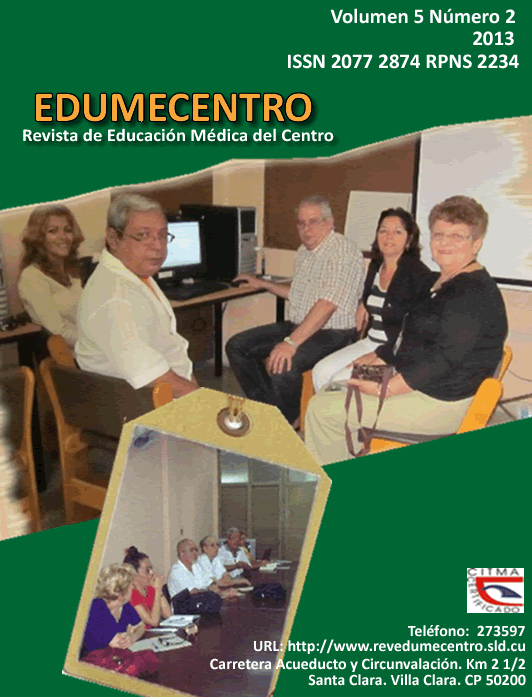A Morphophysiology educational software with an interdisciplinary approach for 3rd year Nursing Degree Studies
Keywords:
Morphophysiology, Educational software, Undergraduate nursing education, Computer programs.Abstract
Background: The new pedagogical trends demand that the teachers deal with the contents through a productive learning, and not through rote learning. This, together with the use of the Information and Communication Technology (ICT) facilitates the acquisition of knowledge. Methods: A development research was conducted in order to design an interdisciplinary educational software for the improvement of the teaching-learning process of the subject Morphophysiology through a system of teaching assignments in 3rd year Nursing Degree students from the Medical University of Villa Clara. Theoretical, empirical, mathematical and statistical methods were used. Results: By means of the instruments used, the needs were determined and the deficiencies that need to be solved in the students’ learning were established. An educational software that serves as a tool to provide effective learning and continuous self-assessment was design. Conclusions: The expert judgment was positive, acknowledging that the software has a methodological and didactic approach useful for strengthening the theoretical and practical learning of the discipline; therefore, it was approved for implementation.
Downloads
Published
How to Cite
Issue
Section
License
Los autores que publican en esta revista están de acuerdo con los siguientes términos:- Los autores/as conservarán sus derechos de autor y ceden a la revista el derecho de primera publicación de su obra, el cuál estará simultáneamente sujeto a una Licencia Creative Commons Reconocimiento-NoComercial-CompartirIgual 4.0 Internacional (CC BY-NC-SA 4.0) que permite a terceros compartir la obra siempre que se indique su autor y su primera publicación esta revista.
- Los autores pueden establecer por separado acuerdos adicionales para la distribución no exclusiva de la versión de la obra publicada en la revista (por ejemplo, situarlo en un repositorio institucional o publicarlo en un libro), con un reconocimiento de su publicación inicial en esta revista.
- Se permite y se anima a los autores a difundir sus trabajos electrónicamente (por ejemplo, en repositorios institucionales o en su propio sitio web) antes y durante el proceso de envío, ya que puede dar lugar a intercambios productivos, así como a una citación más temprana y mayor de los trabajos publicados (Véase The Effect of Open Access) (en inglés).










